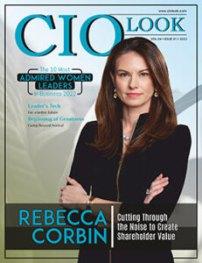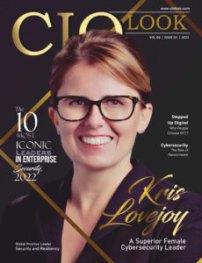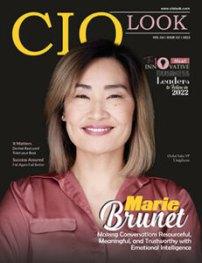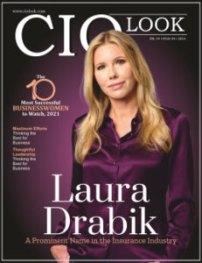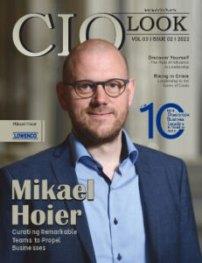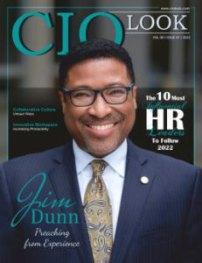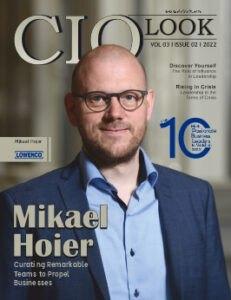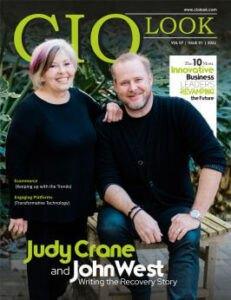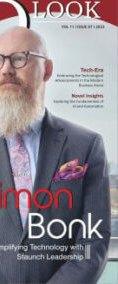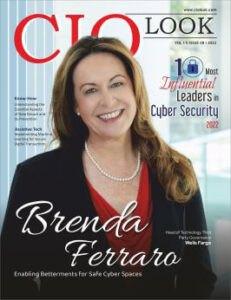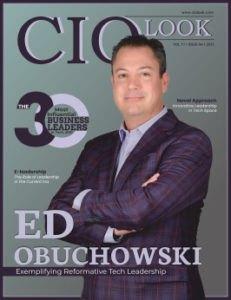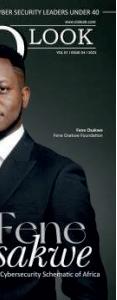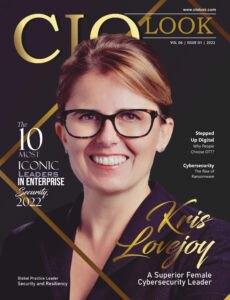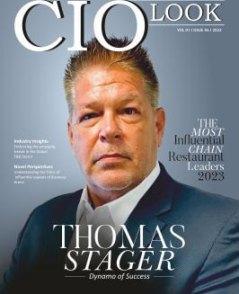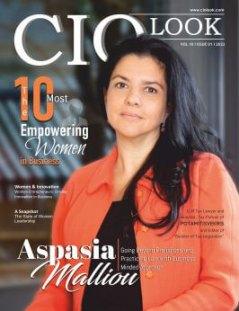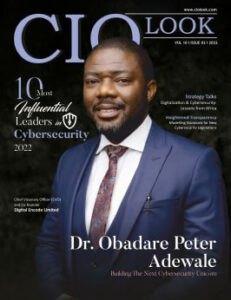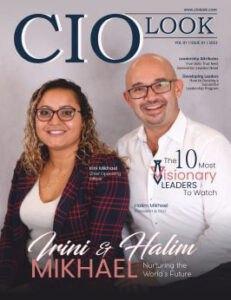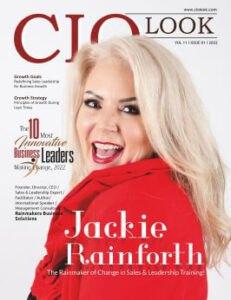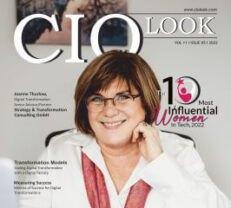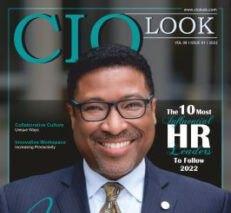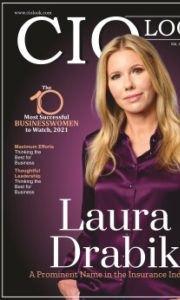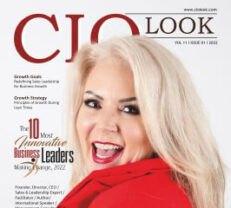

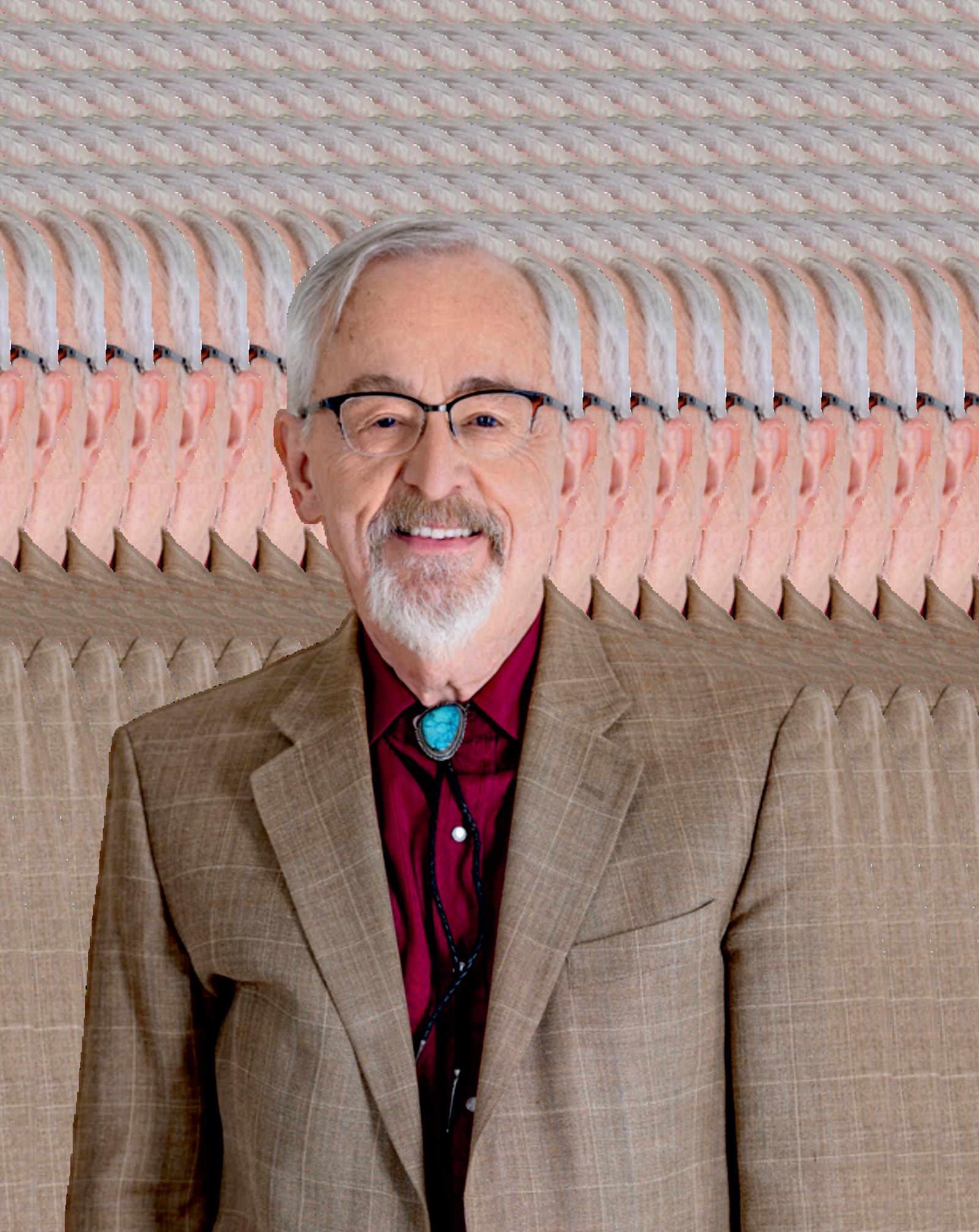

THE UPCOMING EDITION OF GET FEATURED IN

SCAN THE QR CODE
REGISTER NOW
BECAUSE YOUR STORY DESERVES THE SPOTLIGHT












THE UPCOMING EDITION OF GET FEATURED IN

SCAN THE QR CODE
REGISTER NOW
BECAUSE YOUR STORY DESERVES THE SPOTLIGHT







Inaneradefinedbyrapidchange,shiftingpriorities,and
an ever-expanding need for inclusivity, the role of educationalleadershiphasneverbeenmorecritical.The landscape of American education is undergoing a profound transformation one where vision, innovation, and resilience arethekeystoshapingthefutureoflearning.
Our edition of CIOLook titled 2025’s Trailblazer in American Educational Leadership celebrates the pioneers who are not just navigating this transformation but actively steeringittowardbrighterhorizons.Theseleadersgobeyond traditional boundaries, challenging outdated systems and creating pathways that embrace diversity, equity, and the limitlesspotentialofeverylearner Theirworkremindsusthat trueleadershipineducationisnotmeasuredsolelybytitlesor accolades, but by the lasting impact made on students, communities,andthefutureworkforce.
In these pages, you will meet changemakers who have reimagined curricula to align with the realities of a digital world, advocate for underrepresented voices, and built bridges between schools, families, and industries.They lead with empathy as much as with expertise, understanding that education is as much about inspiring hearts as it is about shapingminds.
This edition is not just a recognition of professional achievement it is a tribute to courage, adaptability, and the belief that learning can be a lifelong catalyst for change.As you read their stories, may you find inspiration to lead, to innovate,andtochallengethestatusquoinyourownspheres ofinfluence.Here’stotheeducatorswhodreambigger,work harder,andpavethewayforgenerationstocome.
HappyReading!

-Alaya BrownManaging Editor

https://x.com/CIOLookmedia

https://www.facebook.com/CIOLookMedia/ www.ciolookmedia.com




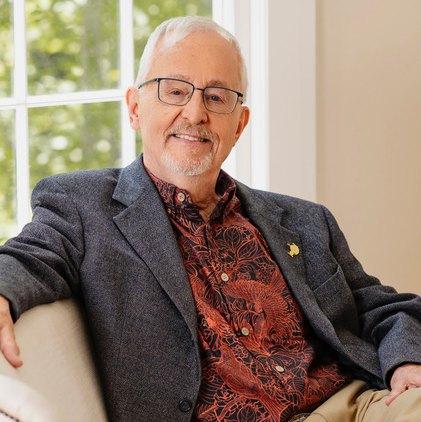
VISION
16. 18. A Framework for Principal Preparation Programs Developing Next-Generation Educational Leadership
Data-Driven Decision Making The Evolution of Educational Leadership Practices


Larson’s initiative didn’t just distribute knowledge; it empowered educators and reignited student curiosity around the world” .
In an age marked by challenges and opportunities, few individuals have combined scientific rigor with educational passion as effectively as Richard C. Larson As America steps into a transformative phase of educationalreformandtechnologicaladvancement,Larson’s journeyoffersmorethanabiography—itservesasaroadmap for shaping the future His work, spanning operations research and educational technology, has created bridges between theory and real-world application, between classroomsandcommunities,andbetweenlearnersandlifechangingopportunities.
Throughouthisdistinguishedcareer,Larsonhasstoodatthe intersection of mathematics, systems thinking, and human development.Hisbeliefinthepowerofeducationasaforce multiplier,hisadvocacyforaccessibleandequitablelearning, and his ability to harness technology to solve large-scale problemshaveestablishedhimnotjustasaninnovatorbutas a trailblazer for a smarter, more inclusive America His influence, deeply embedded in both institutional transformationandglobalimpact,continuestoshapehowwe thinkaboutknowledgedisseminationandproblem-solvingin adata-drivenworld.
Hisstory,voice,andleadershipresonatenowmorethanever, asnationsreimagineeducationinthedigitalageandasfuture generations seek guidance from leaders who not only envisionchangebutembodyit.
Born in 1943 in Bayside, Queens, Richard Larson’s early years were characterized by curiosity, adaptability, and a fascinationwithsystems.Growingupindifferentcitiesacross the northeastern United States, young Larson developed an

instinct for asking questions and solving problems—a trait that would later define his academic and professional life. These foundational experiences taught him to navigate change,seekclarity,andembracediversityofthought.
HiseducationaljourneyledhimtotheMassachusettsInstitute ofTechnology(MIT),wherehecompletedhisundergraduate, graduate,anddoctoralstudiesinelectricalengineeringbythe ageof26.Larson’sPh.D.thesisontheallocationofurban policepatrolforceswasaprecursortohislifelongmission: to use mathematics, data, and systems analysis to enhance publicservicedelivery Evenasastudent,Larsonrecognized the transformative potential of analytical thinking in improvingurbanlifeandhumanwelfare.
At the core of Richard Larson’s early career lies a deep commitment to operations research—a field that applies mathematical and analytical tools to optimize systems and guide decision-making. His groundbreaking work in urban systems, particularly in emergency service optimization, reshaped how cities approach resource allocation. Collaborating with the RAND Corporation and other institutions, he developed models that enhanced the responsiveness of police, fire, and ambulance services, significantlyimprovingurbanlifequality
Thisworkdemonstratedthatdataandmathematicscouldbe deployed not merely as academic tools, but as catalysts for societal change. His contributions helped municipalities make smarter decisions—saving time, lives, and taxpayer dollarsintheprocess.Larson’smodelsbecameblueprintsfor modern public service management and earned him recognitionasoneofthepioneersinthefield.
Larson’s models became blueprints for modern public service management and earned him recognition as one of the pioneers in the field” . “


RichardLarsondidn’tstopatsolvinglogisticalproblems—he ventured into the psychology of human experience, particularly how people perceive time and delay Dubbed “Doctor Queue,” Larson became a household name among those interested in customer experience and service design. Hisworkinqueueingtheorycombinedquantitativeanalysis with qualitative insight, revealing that perceptions of fairness and communication often matter more than actualwaittimes
His frequently cited remark, “Often, the psychology of queuing is more important than the statistics of the wait itself,”isacornerstoneofmodernservicesystems. Whether it'sdesigningairportlines,amusementparks,orcallcenters, Larson’s research provided a humane lens through which operational efficiency and customer satisfaction could coexist. His contribution helped industries understand that efficiencymustserveempathytodelivertrueexcellence.

Richard Larson’s approach to education transcends the classroom and textbook. He promotes what he calls “model thinking”—the ability to understand and solve real-world problems through mathematical and conceptual models” . “
Larson’ssecondgreatactbeganinthe1990s,whenheturned his attention to one of the world’s most pressing issues: educationalaccessandquality.AsDirectorofMIT’sCenter forAdvancedEducationalServices,heledeffortstodevelop and distribute cutting-edge, technology-based learning experiences. Recognizing the scalability of digital tools, he soughttodismantlethebarriersofgeography,privilege,and infrastructure.
He co-founded MIT BLOSSOMS (Blended Learning OpenSourceScienceOrMathStudies),aprogramoffering free, interactive STEM lessons enhanced by teacher-led classroom activities. This hybrid model, combining global expertise with local engagement, provided an inclusive, adaptable alternative to traditional instruction—particularly impactful in underserved regions. Larson’s initiative didn’t just distribute knowledge; it empowered educators and reignitedstudentcuriosityaroundtheworld.
Larson’s most expansive educational venture came with the creation of the Learning International Networks Consortium (LINC) Established at MIT, LINC brought together educators, policymakers, and innovators from over 25 countries to discuss, design, and deploy technologydrivensolutionstoeducationalinequities.Throughannual symposia and sustained collaborations, LINC enabled dialogue on issues like digital literacy, workforce development,andequitableeducationatscale.

Larson’s leadership in LINC reflected his belief that true educational transformation must be collaborative and cross-cultural Hismantra—“Technologycanbeapowerful equalizer” was not a slogan but a north star guiding partnerships across continents. Under his guidance, LINC became a platform for hope and action, giving voice to thoseoftenexcludedfrommainstreamacademicdiscourse.
Richard Larson’s approach to education transcends the classroom and textbook. He promotes what he calls “model thinking”—theabilitytounderstandandsolvereal-world problems through mathematical and conceptual models For Larson, education isn’t about memorizing facts but developingcriticalreasoning,learningthroughmistakes, andengagingwithambiguity.
In his book Model Thinking for Everyday Life, Larson champions exercises that train students to think like detectives questioning assumptions, testing hypotheses, and deriving insights from complex systems. His students describe him as more than a teacher a mentor who challenges and inspires, always emphasizing process over productandgrowthoverperfection.
Where conventional education emphasizes passive learning and rote memorization, Larson offers a vibrant alternative: interactive, contextual, and deeply human learning. He embraces blended learning models, emphasizes teacherstudentcollaboration,andadvocatesforhands-on,low-tech engagement even in high-tech environments. His pivot from merely “delivering content” to “creating meaning” has reshapedwhateffectivelearninglookslikeinthe21stcentury
Larson often says, “A child’s educational opportunities shouldn’tbelimitedbywheretheywerebornorthewealthof theirparents.”Thisprinciplehasinformedeveryinitiativehe has launched from BLOSSOMS to LINC and sets a moral framework for education policy in a globalized world
Larson’s influence spans decades, disciplines, and borders. Hehasauthoredover175scientificpublications,advisedcity governments and global organizations, mentored future leaders, and championed systemic reform in both public service and education. His recognition by the National
“
Larson’s Ph.D. thesis on the allocation of urban police patrol forces was a precursor to his lifelong mission: to use mathematics, data, and systems analysis to enhance public service delivery” .
AcademyofEngineering,hispresidencyofINFORMS,and his leadership at MIT all speak to a life defined by scholarship,service,andforesight
But his greatest legacy may well be the millions of lives touched by his ideas students who discovered joy in learning,citiesthatransmarterandsafer,andclassroomsthat became more inclusive through digital innovation He reminds us that the best solutions are those that combine rigorousthinkingwithdeepcompassion
As America navigates the transformative landscape of Education 2025, Richard C. Larson’s work stands as a guidinglight Hisstoryisoneofvisionandtenacity,butalso ofhumilityandcollaboration.Hehasshownthatoperations research is not just about numbers—it’s about people And education, when combined with technology and heart, becomesthemostpowerfulforceforshapingabetterworld.
The future of education will not be written by algorithms or institutions alone—it will be written by those who, like Richard Larson, believe in democratizing excellence and bridging the divide between science and society As we envisionaneweraoflearning,wemustrememberhislegacy: that a commitment to innovation, inclusion, and insight cantrulychangetheworld.
Intoday’sfast-changingworld,educationstandsasoneof themostpowerfulforcesshapingthefuture.Yet,foritto truly meet the demands of the 21st century, it needs leaderswhocanguideitthroughtransformation.Educational leadership is no longer just about managing classrooms or institutions,itisaboutenvisioningabetterfutureforlearners and creating the conditions for them to thrive in a complex, interconnectedworld.
In the past, educational leadership often focused on administrative efficiency, curriculum delivery, and maintaining discipline. While these remain important, the role has evolved significantly. Leaders are now expected to integrate technology into teaching, promote inclusive learning, address mental health concerns, and inspire creativityalongsideacademicachievement.
Today’s educational leader is part visionary, part strategist, andpartchangeagent.Theymustnavigaterapidadvancesin technology,respondtoshiftingsocietalneeds,andimplement innovative teaching models—all while keeping education’s core mission intact: to prepare students for life, not just for exams.
Tomeettheseexpandingresponsibilities,thenextgeneration of leaders must combine professional expertise with strong personalvalues.Visionarythinkingisessential—theyneedto anticipatetrends,fromglobaleconomicshiftstoadvancesin artificial intelligence, and align educational strategies accordingly. Emotional intelligence plays an equally importantrole,allowingleaderstobuildstrongrelationships with teachers, parents, and students, and to resolve conflicts withempathyandrespect.
Adaptabilityisanotherdefiningtrait.Educationallandscapes can change overnight due to new policies, emerging technologies,orsocietalchallenges,andleadersmustrespond withagility.
Collaborationalsoliesattheheartofeffectiveleadership,as success increasingly depends on partnerships between educators, communities, and policymakers. Finally, a deep commitment to equity ensures that every learner, regardless of background, has access to quality education and the opportunitytosucceed.
The rise of digital learning has fundamentally reshaped classrooms. From AI-powered learning platforms to virtual reality simulations, technology offers new ways to personalize and enhance education Forward-thinking educationalleadershiprecognizesthepotentialofthesetools butalsounderstandstheirlimits.Themostsuccessfulleaders strike a balance, using technology to enrich learning while ensuring that human connection remains central to the educationalexperience.
Technology should never replace the role of the teacher as a mentorandguide.Instead,itshouldfreeupeducatorstofocus on higher-level thinking, creativity, and problemsolving—skillsthatcannotbereplicatedbymachines.
One of the most important aspects of educational leadership today is fostering inclusivity Schools and universities are increasingly diverse, and leaders must ensure that every student feels valued and respected. This goes beyond avoiding discrimination it involves actively promoting equity, celebrating cultural diversity, and designing learning experiencesthatareaccessibletoall.
By investing in teacher training on diversity and inclusion, developingculturallyresponsivecurricula,andcreatingsafe spaces for dialogue, leaders can build environments where students not only learn but also grow as empathetic global citizens.

Strong educational leadership also means recognizing that teachersarethebackboneofanyinstitution.Theirmotivation, skills, and professional growth directly impact student success. The best leaders invest in their educators through mentorshipprograms,professionaldevelopmentworkshops, andopportunitiesforcollaboration.
Whenteachersfeelsupportedandvalued,theyaremorelikely to innovate in the classroom, engage deeply with students, and remain committed to their profession. This, in turn, createsacultureof excellencethatbenefitstheentireschool community.
At a time when misinformation, societal polarization, and ethical challenges are increasingly common, values-based leadershiphasneverbeenmoreimportant.
Educational leaders must model honesty, fairness, and accountability in all decisions. This means putting student welfare first, making transparent choices, and fostering an environmentwhereintegrityisnon-negotiable.
By leading with strong values, educators do more than improvetheirinstitutions—theyshapethemoralcompassof thenextgeneration.
The ultimate purpose of educational leadership is to equip studentswiththeskills,confidence,andadaptabilitytheywill needinanunpredictablefuture.Thisrequiresmovingbeyond rote learning and embracing approaches that foster critical thinking, creativity, collaboration, and real-world problemsolving.
Curricula should encourage project-based learning, community engagement, and interdisciplinary exploration, helping students connect academic concepts to practical applications. By doing so, leaders ensure that education remainsrelevantandempoweringinthefaceofchange.
Thepathtowardnext-generationeducationalleadershipisnot withoutobstacles.Limitedresources,policyconstraints,and resistance to change can all slow progress.Yet, leaders who remain committed to innovation and student-centered approachescannavigatethesechallengessuccessfully
Continuous learning is key Just as they expect teachers and students to grow, leaders must invest in their own development attending global conferences, engaging in research, and connecting with other leaders to share best practices. Educational leadership is not static; it evolves alongsidesocietyitself.
Developing next-generation educational leadership is about more than managing institutions, it is about inspiring transformation It requires a blend of vision, empathy, adaptability, and a deep-rooted commitment to equity and integrity
When leaders embrace these principles, they create learning environmentswherebothstudentsandteacherscanflourish. They prepare young people not only for careers but for meaningful lives, ensuring that education fulfills its highest purpose: empowering individuals to make a positive impact ontheworld.
Educational leadership has transformed dramatically over the past century. Once seen primarily as an administrative role managing schedules, budgets, anddisciplineithasevolvedintoaforward-thinkingpractice centered on inspiring educators, empowering students, and shapingfuture-readylearningenvironments.
Today,educationalleadershipislessaboutmaintainingorder and more about setting a vision, fostering innovation, and ensuring that education remains a powerful force for social progress.
In the early 20th century, educational leadership mirrored industrial management models. School principals and administratorsweretaskedwithenforcingrules,maintaining order, and ensuring a uniform curriculum. The leadership style was often authoritative, leaving little space for teacher autonomy or creative decision-making. While this provided stability,italsocreatedrigidsystemsthatdidnotalwaysserve thediverseneedsofstudents.
By the mid-1900s, societal changes shaped by post-war reforms, civil rights movements, and new understandings of psychology began to shift the focus of education. Leaders realizedthatrigidcontrolwasnotenoughtoimprovestudent outcomes. This led to the rise of instructional leadership, where principals worked closely with teachers, supporting their professional development and encouraging more engaging teaching methods. It was a move toward seeing leadership as a collaborative,learning-centeredprocess, one thatplacedstudentsuccessatthecoreofdecision-making.
Asglobalization,technology,anddiversitybegantoinfluence classrooms, educational leadership expanded to include collaborative decision-making Leaders began involving teachers, parents, and even students in shaping school priorities The role also took on a stronger advocacy dimension, addressing equity in access to learning, supporting students with disabilities, and promoting culturally responsive education. This period marked a shift from leadership as a top-down directive to leadership as a sharedresponsibilitywithintheschoolcommunity
Today, educational leadership is defined by adaptability, vision, and the ability to lead through rapid change. Transformational leaders inspire a shared vision, motivate teams,andcreateenvironmentswhereeducatorsandstudents can thrive Adaptive leadership has become equally important, emphasizing flexibility in the face of uncertainty Theglobalpandemicwasacleartestofthisskill—leadershad to implement digital tools overnight, maintain student engagement in virtual classrooms, and address the mental healthchallengesbroughtbyisolationanddisruption.
Technology has fundamentally reshaped educational leadership Leaders now rely on learning management systems, real-time performance analytics, and AI-powered tools to make data-driven decisions. Communication with staff, parents, and students happens instantly through digital platforms.

At the same time, technology presents new challenges: ensuringdigitalequity,protectingstudentdata,andbalancing screen time with meaningful human interaction. The most successful leaders approach technology as a tool to enhance not replace the relationships at the heart of education.
Despite advances in systems and tools, the essence of educationalleadershipremainsdeeplyhuman.Theroleisas much about building trust and relationships as it is about strategicplanning.Greatleaderslistentoteachers,understand parents’concerns,andinspirestudentstobelieveintheirown potential.Theyleadwithempathy,knowingthatwell-beingis as important as academic achievement. In times of crisis or change, this human connection becomes the foundation on whichresilienceandprogressarebuilt.
Lookingtothefuture,educationalleadershipwillcontinueto adapt to societal needs. Personalized learning will become more prevalent, as leaders work to tailor education to each student’s abilities and aspirations. Preparing students for global citizenship—understanding cultures, sustainability, andethics—willgaingreateremphasis.
Hybrid learning models will become standard, blending inperson and online experiences And perhaps most importantly,leaderswillkeepwell-beingatthecenteroftheir mission, ensuring that schools are safe, inclusive spaces for alllearners.
Theevolutionofeducationalleadershipisareflectionofthe world’s broader changes. From authoritative administration to visionary, inclusive guidance, the role has grown more complex and more impactful. Today’s leaders face unprecedentedchallenges,butalsoimmenseopportunitiesto shape education in ways that prepare students not just for exams, but for life. By combining strategic thinking with empathy, embracing innovation while honoring human connection, and committing to equity and excellence, educational leaders can ensure that the next generation inherits not only knowledge but the inspiration to use it wisely.









